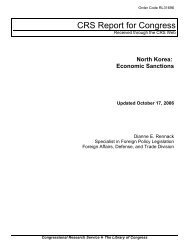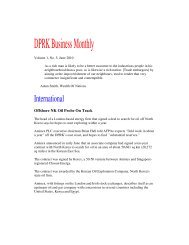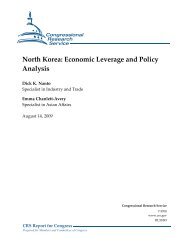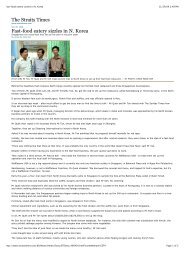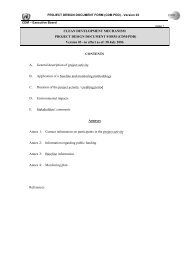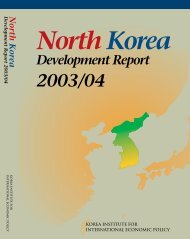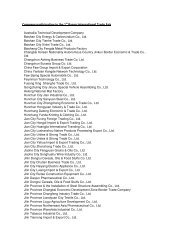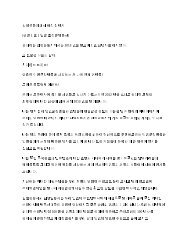North Korean Policy Elites - Defense Technical Information Center
North Korean Policy Elites - Defense Technical Information Center
North Korean Policy Elites - Defense Technical Information Center
Create successful ePaper yourself
Turn your PDF publications into a flip-book with our unique Google optimized e-Paper software.
Jong Yun-hyong Flood Damage Reconstruction<br />
Director<br />
Committee<br />
Ri Hak Gwan Committee for Promotion of Investment Vice-President<br />
and Trade<br />
Ri Mun Ho DPRK Academy of Sciences Head of Counselors for Science<br />
Jong Hun Il DPRK Academy of Sciences Senior Officer, Bureau of International<br />
Science and Technology Cooperation<br />
Ri Jun Mu Federation of <strong>Korean</strong>s in the U.S. Chairman of Culture and Arts<br />
Committee<br />
Mun Chang Su Federation of <strong>Korean</strong>s in Australia Director of Secretariat<br />
Ju Yong Il International Confederation of <strong>Korean</strong>s Vice-Chairman<br />
Ri Yong Il<br />
<strong>North</strong> Headquarters of the Nationwide Vice-Chairman<br />
Special Committee for Probing the<br />
Truth behind the GIs’ Massacres<br />
Jo Hyon Gi<br />
National Bereaved Families Society of<br />
Civilian Victims before, after, and during<br />
the <strong>Korean</strong> War<br />
Member of the Executive Committee<br />
The DPRK’s neighboring powers, including the Republic of Korea, China, Russia, and<br />
Japan, try to use the carriers of “foreign wind” (sometimes regarded as a potential “fifth column”<br />
by the regime hard-liners) to penetrate the <strong>North</strong> <strong>Korean</strong> political system. They strive to advance<br />
their respective national interests through whatever channels and transmission belts they can<br />
master, in order to get inside the Kim’s family court and exercise direct or indirect influence on<br />
Kim Jong Il’s thinking about power, policy, and the future direction of the nation.<br />
E. THE BIG PICTURE: FORWARD WITH OR WITHOUT THE KIM REGIME?<br />
Today, <strong>North</strong> Korea is a different country than it was when the Great Leader passed away<br />
a decade ago. It is in the midst of steady, albeit stealthy, structural changes affecting all areas of<br />
the national economy, politics, and society, as well as people from all walks of life – the<br />
strengthening neo-authoritarian military rule and accelerating catch-up modernization reforms<br />
aimed against the communist party rule and socialist economic stagnation.<br />
The four pillars of the traditional political regime – fear, isolation, elite unity, and the<br />
Juch’e ideology – began to show noticeable cracks and signs of erosion. First, there is less fear in<br />
the country where money is the king and people can buy their way out of any trouble, even exiles<br />
to the mines and labor re-education camps. Second, there is less isolation in the country where<br />
hundreds of thousands of citizens can go back and forth across its national borders as they do on<br />
the <strong>Korean</strong>-Chinese frontier, where tens of thousands of people use mobile phone services, can<br />
watch international television channels, and have access to the Internet, regardless of its censored<br />
Security Area. The KPA Panmunjum Mission also includes Major-General Pak In-soo and Major-General Jo<br />
Dong-hyun.<br />
IV-53



